Ultra-small, ultra-low-power LoRa/LoRaWAN + Concurrent GNSS Asset Tracker
Designed by Tlera Corp in United States of America
Buy with confidence.
Our Tindie Guarantee protects your purchase from fraud. Learn More
The GasCap Asset Tracker is inspired by the GPS position tracker hidden in a car's gas cap featured in the Breaking Bad spin-off Better Call Saul. The fictional device requires some kind of large mil…
Read More…The GasCap Asset Tracker is inspired by the GPS position tracker hidden in a car's gas cap featured in the Breaking Bad spin-off Better Call Saul. The fictional device requires some kind of large military receiver and such a system (if it even existed) would likely cost 100x what the LoRaWAN-enabled GasCap Asset Tracker costs.
"Typical" gas cap shell outer dimensions (lots of variation here) are 2 5/8 inch wide by 1 5/8 inch deep (or ~67 mm x ~41 mm); I sized the device to fit within these dimensions while being powered by a single AA-sized 3.6 V, 2400 mAH LiSOCl2 battery. This would allow the device to remain in operation for weeks or months, depending on the GNSS duty cycle.
While I don't seriously expect anyone to install one of these devices into a car gas cap, it will fit in some surprisingly tight spaces. And at just 7.1 g w/o battery, it is light enough to enable small animal tracking; at 16 mm x 62 mm, unobtrusive enough to enable bicycle tracking; and at less than $80, inexpensive enough to satisfy the requirements of many position tracking use cases.
Check out this cool IoT tracking platform for use with your GasCap or any IoT device: IoTWonderland for "tracking anything, anywhere, anytime."
 GasCap.v02f STEP file reposited at GitHub here.
GasCap.v02f STEP file reposited at GitHub here.
Ultra-low-power, 16 mm x 62 mm asset tracker consisting of CMWX1ZZABZ-078 (SX1276 LoRa radio and STM32L082 host MCU), CAM M8Q concurrent GNSS module, MX25R6435 8 MByte SPI NOR flash memory for data logging, LIS2DW12 accelerometer for wake-on-motion/sleep-on-no-motion functionality, and BME280 for P/T/H environmental sensing.
Total sleep current as low as 2 uA with LIS2DW12 motion watchdog continuously monitoring state of motion. Average current usage with LoRaWAN updated every 10 minutes and GNSS updated every two hours is < 250 uA.
Full power control on the CAM M8Q with GPIO-enabled VDD through a dedicated 3.1 V LDO and a separate GPIO-enabled RTC backup. CAM M8Q may be powered down with RTC backup to allow warm start fixes every four hours (when ephemeris expires) or less. The CAM M8Q RTC backup can also be powered off with zero current draw for cold start fixes at longer-than-4-hour intervals.
GasCap Asset Tracker is wired to support LoRa (FSK, GFSK, LoRa radio) and LoRaWAN.
External whip (LoRa/LoRaWAN) antenna is required.
Board is intended to be powered by a 3.6 V, 2400 mAH, AA-sized LiSOCl2 battery (battery anode (+V) points toward the USB connector!) but any source between 3.3 and 5.5 V will do. LiSOCl2 batteries are ideal for long-term deployment. A 3.6 V, 2400 mAH, AA-sized LiSOCl2 battery @ 1 location fix per day will last more than ten years.
Programmable via the USB connector (or tag connect) using Thomas Roell's superb M0+ Arduino core and the Arduino IDE (select the Cricket board variant), of course!
Product-wise, the GasCap Asset tracker is a replacement for the standard Cricket and the longCricket Asset Trackers. These have been popular but I wanted a successor that would maintain the best features of both while reducing the size and weight. I expect to keep producing the GasCap and its sister Asset Tracker, the Gnat, going forward.
Like the Crickets, the GasCap uses the CMWX1ZZABZ-078 SX1276/CM0+ and CAM M8Q-0-10 concurrent GNSS modules. I have replaced the BMA400 wake-on-motion accelerometer on the Crickets with the LIS2DW12 because it is cheaper and allows just 0.4 uA of current use even when in active mode. Plus, there were some mutterings by Bosch that they would be ending BMA400 production without a replacement. I have kept the BME280 used on the Crickets. While the barometer can keep track of relative altitude changes, environmental sensing is not a core requirement of animal tracking. However, it is a core requirement of tracking cargo in transport since insurers need to know when and where the package was overheated, exposed to excessive moisture, tipped over or otherwise damaged en route. The GasCap Asset Tracker also keeps the 8 MByte SPI NOR flash memory for data logging. GasCap schematics are reposited on Github here.
The GasCap is intended to be powered by an AA-sized LiSOCl2 battery. Downside is that such a battery weights 17 g. However, one could also use a small LiPo battery; this one weighs just 3 g! There are two plated through-holes on the side of the pcb for a JST connector for the LiPo battery. One could remove the metal battery holders soldered to the back of the pcb in this case and end up with a 16 x 62 x ~8 mm device weighing just ~10 g. My testing shows that each GNSS fix typically costs ~0.6 mAH so one could get 200 position fixes with such a configuration. This might be perfect for overnight cat tracking or (only where legal!) wife tracking, etc.
The STM32L082 Cortex M0+ processor runs at 4, 16, or 32 MHz with 192 kB of flash memory and 20 kB of SRAM. The system core and Arduino wrapper are written from scratch to be complete, robust, and power and memory efficient. The GNSS and LoRaWAN APIs make using the LoRa radio modem and CAM M8Q GNSS engine simple and easy.
Each GasCap Asset Tracker has a unique 64-bit (8 hex bytes) device EUI (Extended Unique Identifier) readable via a simple query in any Arduino sketch which identifies the peripheral node to the LoRaWAN gateway or any other LoRa device or LoRa network. This allows multiple GasCap (and multiple Gnat) Asset Trackers to be present on a network with no ambiguity.
The STM32L082 MCU has all of the usual serial peripherals you would expect from any Arduino-compatible development board including SPI, I2C, UART as well as analog (ADC/DAC/PWM) IO. In order to allow for user expansion, GND, 3V1, D8, D9, SDA, SCL, A3, and A2 are exposed via a MOLEX PicoBlade connector. This means UART, or I2C, or SPI device add-ons may be connected to your GasCap Asset Tracker. There is a tag connect footprint available for SWD programming. The GasCap is as flexible as the Crickets or Gnat in terms of adding external sensors.
The pin out is similar to the Grasshopper development board:
The GasCap Asset Tracker is programmable using the Arduino IDE via the USB connector and serial data output is available through the USB connector for display on the serial monitor of your pc or laptop. The board can also be programmed using a tag connect and an ST LINK V3 and the Arduino IDE or traditional toolchains via the SWD port exposed on the tag connect (D8 and D9). There is a sample sketch reposited on Github here with sensor and flash memory drivers that shows how to use all of the features of the GasCap Asset Tracker (select the Cricket board variant in the Arduino IDE tools menu). The time intervals and LoRaWAN Tx output are user-configurable and the sketch serves as a good starting point for your custom asset tracking firmware.
The GasCap asset tracker is designed to be powered by a 3.6 V, 2400 mAH AA-sized LiSOCl2 battery. A LiPo battery could also be used but the battery must be charged off board. There is a 27K/100K voltage divider connecting the battery anode (marked with a "+" near the USB connector) with an MCU ADC on GPIO A1. The circuit uses a dual FET to isolate the battery voltage (max 4.2 V) from the voltage divider when not enabled (by GPIO D2) to save power.
The GasCap Asset Tracker has a uFl connector for the LoRa antenna. I use these, but any suitable LoRa antenna designed for the appropriate frequency (~915 MHz in the US) will do. The CMWX1ZZABZ-078 supports the following LoRaWAN bands:
The LoRaWAN protocol requires a LoRaWAN-compatible gateway to receive and forward the data to the internet. I have used both Multitech MTCAP and TheThingsNetwork gateways with success. An API to support simple point-to-point LoRa Rx/Tx (FSK, GFSK, LoRa radio) between GasCap and other GasCap or Gnat Asset Trackers, LoRaSensorTiles, or Grasshopper development boards is also available.
The U-BLOX CAM M8Q allows concurrent reception of up to 3 GNSS (GPS, Galileo, GLONASS, BeiDou) services without an external antenna, and can achieve -167 dBm navigation sensitivity when tracking with GPS and GLONASS.
The CAM M8Q has a one pulse-per-second (pps) output connected to a green led and connected to the STM32L082 (GPIO D4) for syncing the STM32L082 RTC time with the GNSS time. The pps output can also be used as a CAM M8Q data ready interrupt attached to the STM32L082.
Everything about the GasCap asset tracker has been designed to minimize power usage. The CAM M8Q has a dedicated 3.1 V low-Iq LDO whose enable is connected to a STM32L0 GPIO (D5) so that power to the CAM M8Q can be cut to zero when the CAM M8Q is not actively tracking (this is handled automagically by the simple GNSS API embedded in the Arduino core). The L082 GPIO A0 provides the RTC back up voltage (at a cost of ~15 uA) for the CAM M8Q when the main power is off to allow warm and hot starts when the fix duty cycle is shorter than 4 hours. This backup power can be set to zero for full power control of the CAM M8Q when GNSS duty cycles are longer than the ephemeris data validity (4 hours).
 GasCap power usage for the first hour with five minutes between GNSS fixes. CPU clock is set to 32 MHz and fix criterion is EPHE < 40. Measured using Nordic's Power Profiler II.
GasCap power usage for the first hour with five minutes between GNSS fixes. CPU clock is set to 32 MHz and fix criterion is EPHE < 40. Measured using Nordic's Power Profiler II.
In the power test shown, average current usage for the first hour is 7.32 mA or ~0.6 mA per fix. Based on this result, running the GasCap at a duty cycle of 1 GNSS fix every two hours would cost about 300 uA. Longer term, say over days or weeks, the average current would be lower; I measured ~250 uA over a 15 day period using a 105 mAH LiPo battery.
The typical sleep current of the Gas Cap asset tracker is 17.5 uA with the CAM M8Q backup on and ~2 uA without. Running the CAM M8Q at a duty cycle of one GNSS location fix every two hours (the satellite ephemeris goes stale after four hours) while reading sensor data every minute and sending LoRaWAN updates of last position and sensor data every ten minutes costs on average ~250 uA. In this mode, the GasCap Asset Tracker would last more than one year using a 3.6 V, 2400 mAH LiSOCl2 AA-sized battery.
We have programmed the LIS2DW12 to send the L082 a sleep interrupt when no motion is detected and a wake interrupt when significant motion is detected in order to allow location fixes and LoRaWAN Tx at a higher duty cycle (say, once per minute) when the device is in motion. The idea is that the asset being tracked will spend most of the time in a stationary position, such that only infrequent updates of its position are required. But when the device changes location, we want the asset tracker to follow the trajectory of the move and report the motion and the asset's new position in a timely manner. Optimizing the long- and short duty cycles will depend on your specific use case but there is enough flexibility in the LIS2DW12's sophisticated interrupt engine to match any requirement and allow users to balance low-power usage with timely location change tracking.
Remote tracking of valuable objects is an interesting embedded design problem with low-power and long-range being the two highest hurdles. LoRaWAN makes low-power (~100 uA), long-range (>1 km) communications possible but GNSS modules are not usually associated with low-power usage. The trick is to design the board for maximal control over the GNSS power and in the GasCap Asset Tracker, we literally shut the power off when we have achieved an accurate enough fix until the next fix interval. Thus for many use cases, the GasCap Asset Tracker can last for a year or more on a single 3.6 V, 2400 mAH LiSOCl2 battery. For use cases where only one fix per day is required, this time can be extended out to many years.
Since we made our first LoRa-enabled GNSS asset trackers (Cricket) available in 2018 we have seen many examples of two general use cases: animal tracking and vehicle tracking.
By far the most popular is animal tracking. Tracked animals include the obvious, like ranging cows, bison, and horses; the surprising, like sea turtles (see here and here) and jellyfish; and perhaps trickiest of all, cats and birds (mostly raptors).
Except for the larger animals, size and weight are critical for success, so battery life (i.e., battery size) can be traded to meet packaging requirements.
For ranging animals, battery life is critical. The battery typically must last an entire season, i.e., one year, so the tracker can be recovered and battery changed/charged when the animals return from the range.
For all animal tracking, inherently ultra-low-power design and the ability to manage power usage via sensors and programming help to meet size, weight and battery life constraints.
If the range of travel of the tracked animal is not more than a few kilometers, or there are gateways that allow constant LoRaWAN reception, then real-time tracking of animals becomes possible. This condition typically applies on ranches, animal preserves, and for animals with defined territories. Otherwise, LoRaWAN data transmission might only be sporadically available with the position data simply logged for later retrieval.
Lastly, environmental sensing (pressure, humidity, temperature) can provide information about the conditions the animals experience. The baro data allow altitude estimation for bird flight. We have designed custom versions of asset trackers with waterproof barometers to measure the depth sea turtles reach when under the water, for example.
The GasCap Asset Tracker provides basic position estimation, motion detection and environmental sensing capabilities that can be advantageous in many animal tracking use cases. For the best fit to a specific use case, of course, a custom-designed solution based on this design might be optimal.
Vehicle tracking usually means bicycles, motorcycles, scooters, trailers, etc; anything that doesn't have modern embedded electronics (GPS) like most cars do today. This could include large trash bins moved around the city, or bull dozers/earth-moving machines on a construction site, tractors/reapers on an agricultural site, golf carts on a golf course, etc. This works particularly well in urban environments where LoRaWAN gateway density is sufficient to allow city-wide coverage of the LoRaWAN network. Then real-time tracking of any and all of these items becomes possible.
In this case, lowest per unit cost might be the over-riding factor if tracking a fleet of scooters or golf carts. If an individual wants to track their personal bicycle or motorcycle to recover after theft then perhaps battery life and robustness of packaging might be higher priorities.
There are many other use cases that fall outside of these two categories including tracking valuable items during transport, tracking things shot up into, or falling down from, the sky (think rocketry, UAVs, etc), tracking of children on the way to/from school, etc.
There is a wide variety of asset tracking applications. The challenge in the design of an ultra-low-power, small, inexpensive asset tracker is to try to hit the sweet spot where the resulting device attributes enable the most applications. The GasCap Asset Tracker is the best we know how to do this.
The main differences between the Gnat and GasCap Asset Trackers are:
Gnat is 20 x 20 mm while GasCap is 16 x 62 mm in pcb area.
Gnat requires an external active GNSS patch antenna, Gas Cap requires no GNSS antenna.
GasCap has a built-in battery holder, Gnat does not.
GasCap has 8 MBytes of SPI flash memory for data logging, and an environmental sensor for cold tracking and altitude estimation, Gnat does not.
Gnat and Gas Cap have a Molex connector with power, GND, and six GPIOs exposed for expansion.
Which one is right for your application? Only you can judge at this point, but these asset trackers are inexpensive enough that you could simply try one or both and see for yourself!
The GasCap Asset Tracker is ultra-small and ultra-light, so will fit just about anywhere.
The GasCap Asset Tracker has a built-in battery holder and GNSS antenna, making the size of a fully-functional asset tracker about the same as your pinky finger.
The GasCap Asset Tracker is power efficient, using on average ~250 uA and lasting a year on a 3.6 V, 2400 mAH LiSOCl2 AA-sized battery for many interesting use cases.
The GasCap Asset Tracker is easy to program using the Arduino IDE (select the Cricket board variant in the Arduino IDE tools menu). Here is a repository of sketches with libraries for the LIS2DW12 and BME280 sensors showing how to use the GasCap Asset Tracker as an asset location tracker, and a pressure/humidity/temperature data logger/remote sensing monitor.
The GasCap Asset Tracker is ready to use (you provide battery and LoRaWAN antenna) as an asset location tracker, environmental data logger, and remote sensor. The asset tracking applications are only limited by your imagination!
You may order pcbs from OSH Park and assemble some of your own, or buy the fully assembled and tested GasCap Asset Tracker here and see how easy it is to start tracking your favorite targets today!
No country selected, please select your country to see shipping options.
No rates are available for shipping to .
Enter your email address if you'd like to be notified when GasCap LoRa+GNSS Asset Tracker can be shipped to you:
Thanks! We'll let you know when the seller adds shipping rates for your country.
| Shipping Rate | Tracked | Ships From | First Item | Additional Items |
|---|---|---|---|---|
|
:
|
Buy with confidence.
Our Tindie Guarantee protects your purchase from fraud. Learn More
Pahrump, NV, United States of America
Ships from United States of America.
38 Reviews | 1,313 Orders
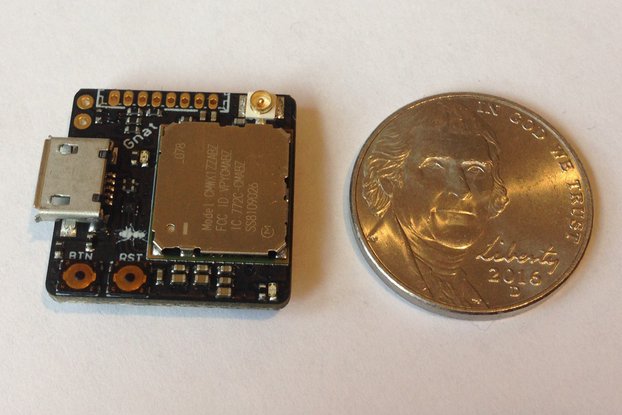
$79.95
Free Shipping!

$39.95
Free Shipping!
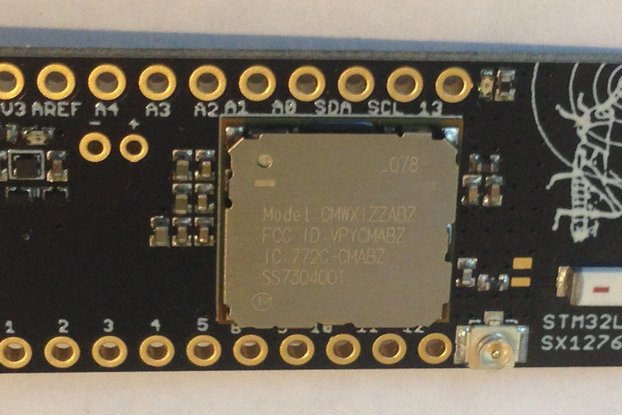
$39.95
Free Shipping!
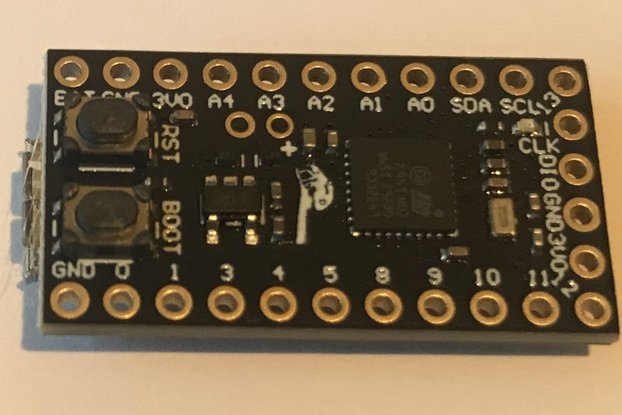
$17.95
Free Shipping!
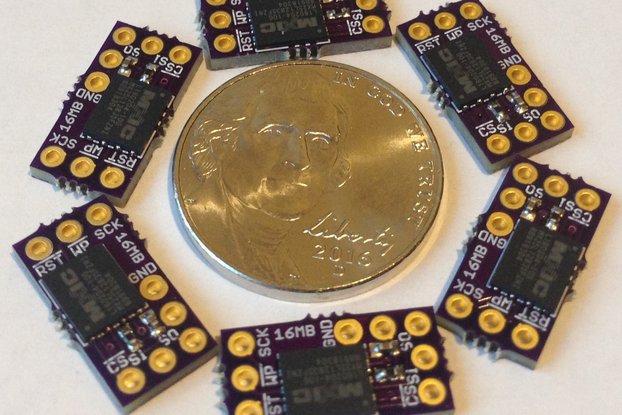
$11.95
Free Shipping!
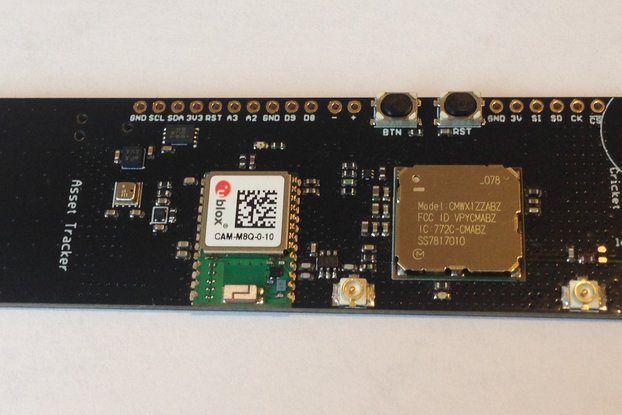
$79.95
Free Shipping!

$79.95
Free Shipping!
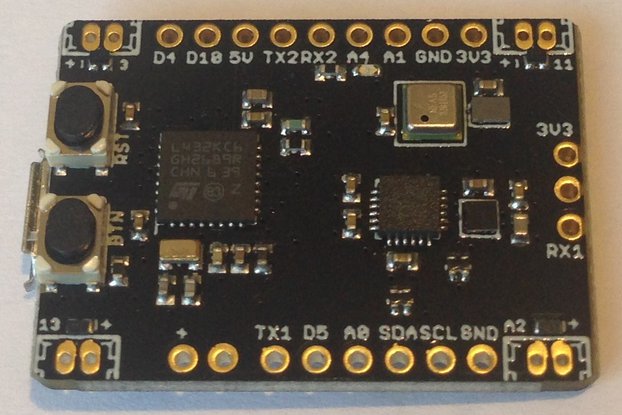
$49.95
Free Shipping!

$79.95
Free Shipping!

$79.95
Free Shipping!

$199.99
Free Shipping!

$79.95
Free Shipping!
By clicking Register, you confirm that you accept our Terms & Conditions
We recognize our top users by making them a Tindarian. Tindarians have access to secret & unreleased features.
We look for the most active & best members of the Tindie community, and invite them to join. There isn't a selection process or form to fill out. The only way to become a Tindarian is by being a nice & active member of the Tindie community!
